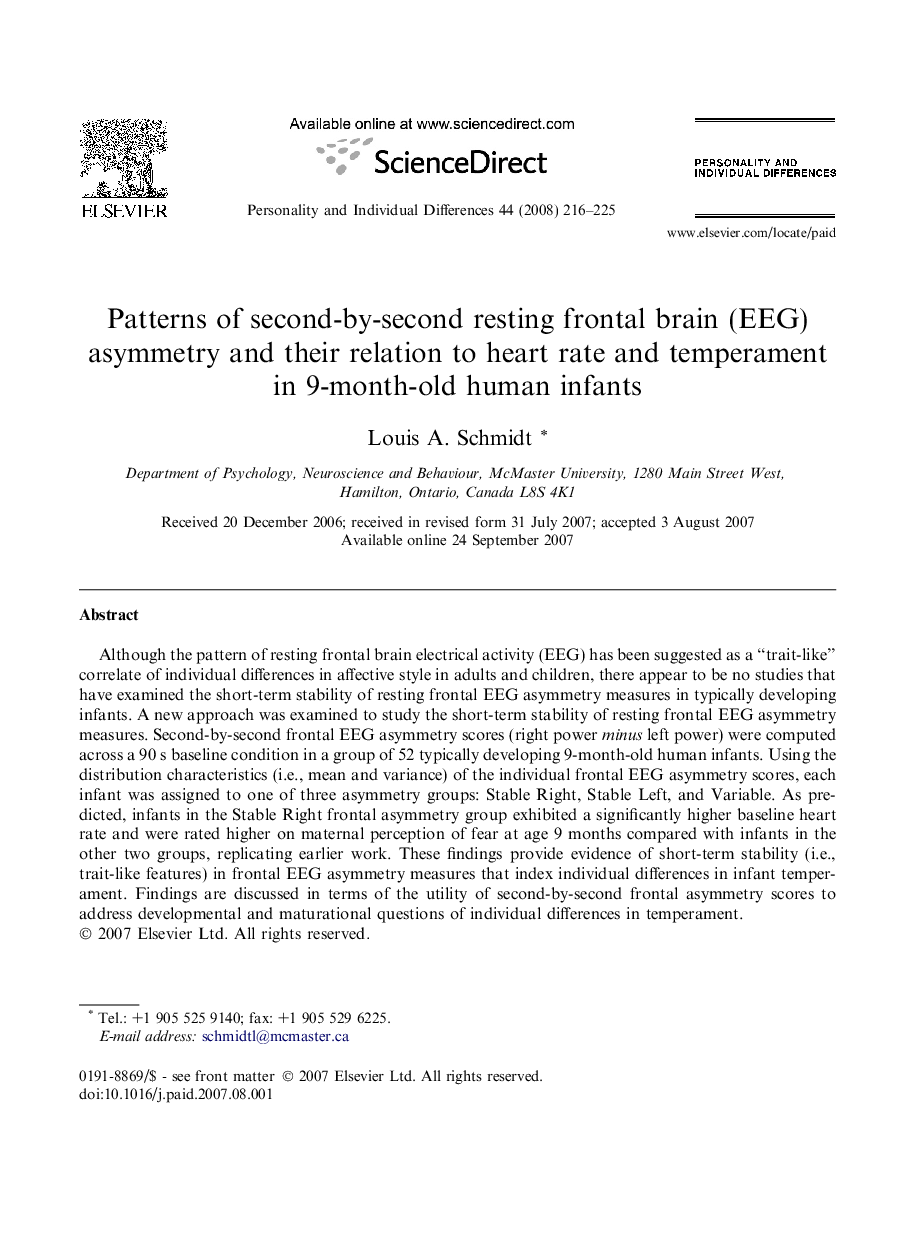| Article ID | Journal | Published Year | Pages | File Type |
|---|---|---|---|---|
| 893075 | Personality and Individual Differences | 2008 | 10 Pages |
Although the pattern of resting frontal brain electrical activity (EEG) has been suggested as a “trait-like” correlate of individual differences in affective style in adults and children, there appear to be no studies that have examined the short-term stability of resting frontal EEG asymmetry measures in typically developing infants. A new approach was examined to study the short-term stability of resting frontal EEG asymmetry measures. Second-by-second frontal EEG asymmetry scores (right power minus left power) were computed across a 90 s baseline condition in a group of 52 typically developing 9-month-old human infants. Using the distribution characteristics (i.e., mean and variance) of the individual frontal EEG asymmetry scores, each infant was assigned to one of three asymmetry groups: Stable Right, Stable Left, and Variable. As predicted, infants in the Stable Right frontal asymmetry group exhibited a significantly higher baseline heart rate and were rated higher on maternal perception of fear at age 9 months compared with infants in the other two groups, replicating earlier work. These findings provide evidence of short-term stability (i.e., trait-like features) in frontal EEG asymmetry measures that index individual differences in infant temperament. Findings are discussed in terms of the utility of second-by-second frontal asymmetry scores to address developmental and maturational questions of individual differences in temperament.
